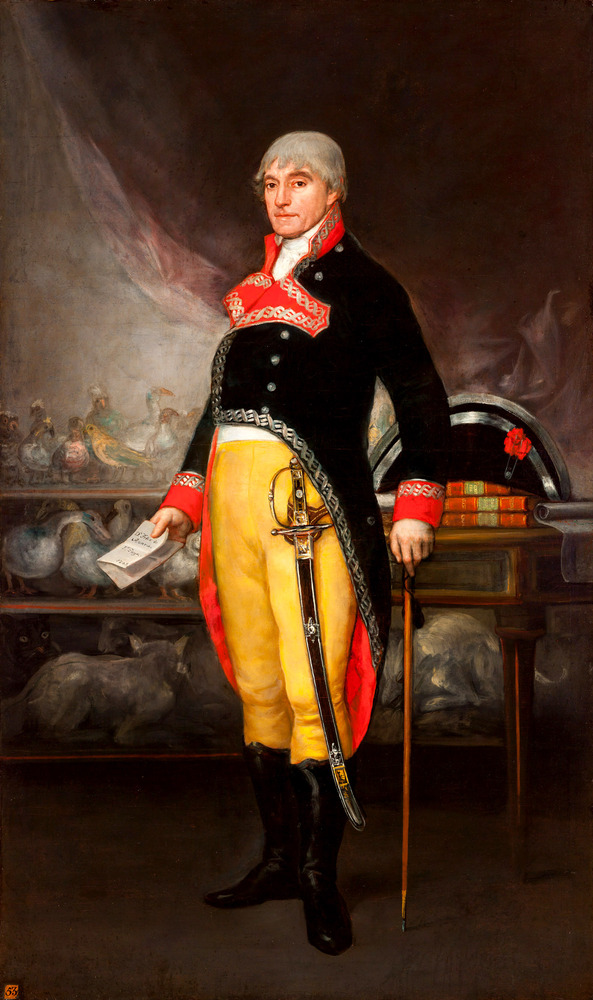Portrait of Félix de Azara

Technical details
Description
This military officer and outstanding naturalist (1742-1821) is depicted in one of Goya's best portraits on account of its masterful execution and spectacular colouring. The army engineer, brother to the diplomat and intellectual José Nicolás de Azara, spent 21 years in the region that is today Uruguay and Paraguay and made the first study of the flora and fauna of that part of South America, which then was part of the Spanish Empire. His scientific works, developed using the empirical method, would be published in the early 19th century in Madrid and Paris. They corrected the classifications made by Buffon and his observations were made fifty years earlier than those that led Darwin to formulate his theory on the origin of the species.
Goya painted this portrait in 1805, when Azara was a brigadier in the Spanish navy and member of the Council for the Fortification and Defence of the Indies. Goya placed Azara in a study, with shelves in the background full of colourful birds and stuffed four-footed animals, and his technique was one of wide and loose brushstrokes. Azara's face is splendidly shaped, and he is dressed in a brigadier's uniform, with a black dress coat and striking yellow breeches. His right hand holds a note with the subject's name, Goya's signature and the date, 1805. His bicorne is seen on the desk, together with three books as a reference to his publications and scientific studies.


